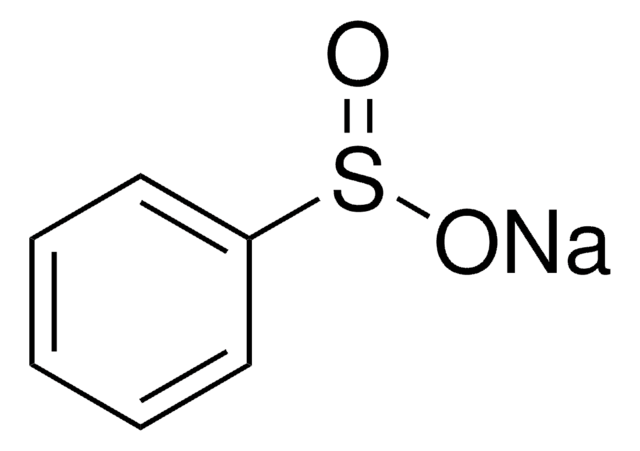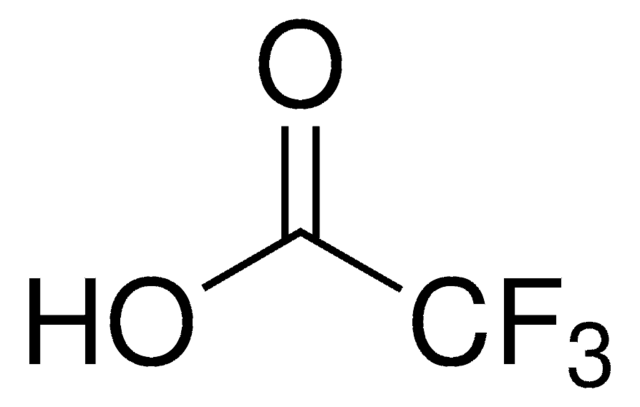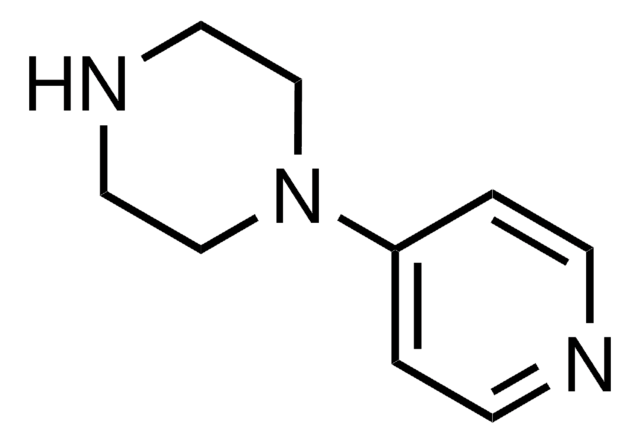380059
4-Chloro-3-nitrobenzonitrile
97%
Iniciar sesiónpara Ver la Fijación de precios por contrato y de la organización
About This Item
Fórmula lineal:
ClC6H3(NO2)CN
Número de CAS:
Peso molecular:
182.56
Beilstein:
1639111
Número CE:
Número MDL:
Código UNSPSC:
12352100
ID de la sustancia en PubChem:
NACRES:
NA.22
Productos recomendados
Análisis
97%
formulario
powder
mp
98-100 °C (lit.)
grupo funcional
chloro
nitrile
nitro
cadena SMILES
[O-][N+](=O)c1cc(ccc1Cl)C#N
InChI
1S/C7H3ClN2O2/c8-6-2-1-5(4-9)3-7(6)10(11)12/h1-3H
Clave InChI
XBLPHYSLHRGMNW-UHFFFAOYSA-N
¿Está buscando productos similares? Visita Guía de comparación de productos
Descripción general
FT-IR and μ-Raman spectra of 4-chloro-3-nitrobenzonitrile have been recorded in the range of 400-4000cm-1 and 100-4000cm-1, respectively. It has been prepred from the reaction of 4-chloro-3-nitrobenzamide and phosphorus oxychloride. Crystal structure of 4-chloro-3-nitrobenzonitrile has been reported. Molecules of 4-chloro-3-nitrobenzonitrile are linked by weak intermolecular C-H…O and C-H…N hydrogen bonds.
Aplicación
4-Chloro-3-nitrobenzonitrile may be employed for the radiosynthesis of analogs of serotonin transporter (SERT) ligands for use in positron emission tomography (PET) studies and for the preparation of N-(4-cyano-2-nitrophenyl)glycine.
4-Chloro-3-nitrobenzonitrile may be used in the synthesis of 3-nitro-4-thiocyanobenzonitryl.
Palabra de señalización
Warning
Frases de peligro
Consejos de prudencia
Clasificaciones de peligro
Eye Irrit. 2 - Skin Irrit. 2 - STOT SE 3
Órganos de actuación
Respiratory system
Código de clase de almacenamiento
11 - Combustible Solids
Clase de riesgo para el agua (WGK)
WGK 2
Punto de inflamabilidad (°F)
Not applicable
Punto de inflamabilidad (°C)
Not applicable
Equipo de protección personal
dust mask type N95 (US), Eyeshields, Gloves
Elija entre una de las versiones más recientes:
¿Ya tiene este producto?
Encuentre la documentación para los productos que ha comprado recientemente en la Biblioteca de documentos.
Galina R Demina et al.
PloS one, 4(12), e8174-e8174 (2009-12-18)
Resuscitation promoting factors (RPF) are secreted proteins involved in reactivation of dormant actinobacteria, including Mycobacterium tuberculosis. They have been considered as prospective targets for the development of new anti-tuberculosis drugs preventing reactivation of dormant tubercle bacilli, generally associated with latent
Bo-Nian Liu et al.
Acta crystallographica. Section E, Structure reports online, 65(Pt 1), o92-o92 (2008-01-01)
In the title compound, C(7)H(3)ClN(2)O(2), the Cl, C and N atoms are coplanar with the aromatic ring. In the crystal structure, weak inter-molecular C-H⋯O and C-H⋯N hydrogen bonds link the mol-ecules. The π-π contact between the benzene rings, [centroid-centroid distances
Yusuf Sert et al.
Spectrochimica acta. Part A, Molecular and biomolecular spectroscopy, 107, 248-255 (2013-02-26)
In the present study, the experimental and theoretical harmonic and anharmonic vibrational frequencies of 4-chloro-3-nitrobenzonitrile were investigated. The experimental FT-IR (400-4000 cm(-1)) and μ-Raman spectra (100-4000 cm(-1)) of the molecule in the solid phase were recorded. Theoretical vibrational frequencies and
S X Cai et al.
Journal of medicinal chemistry, 40(5), 730-738 (1997-02-28)
We report on a series of alkyl- and alkoxy-substituted 1,4-dihydroquinoxaline-2,3-diones (QXs), prepared as a continuation of our structure-activity relationship (SAR) study of QXs as antagonists for the glycine site of the N-methyl-D-aspartate (NMDA) receptor. The in vitro potency of these
A A Wilson et al.
Journal of medicinal chemistry, 43(16), 3103-3110 (2000-08-24)
A series of four 2-(phenylthio)araalkylamines have been radiolabeled with (11)C and evaluated as potential radiotracers for imaging the serotonin transporter (SERT) by positron emission tomography (PET). All four candidates display high affinity for SERT and low affinity for the dopamine
Nuestro equipo de científicos tiene experiencia en todas las áreas de investigación: Ciencias de la vida, Ciencia de los materiales, Síntesis química, Cromatografía, Analítica y muchas otras.
Póngase en contacto con el Servicio técnico







![(R)-1-[(SP)-2-(Dicyclohexylphosphino)ferrocenyl]ethyldi-tert-butylphosphine ≥97%](/deepweb/assets/sigmaaldrich/product/structures/809/974/e027b628-7c2e-4bde-be7e-f9298d0c8b04/640/e027b628-7c2e-4bde-be7e-f9298d0c8b04.png)

